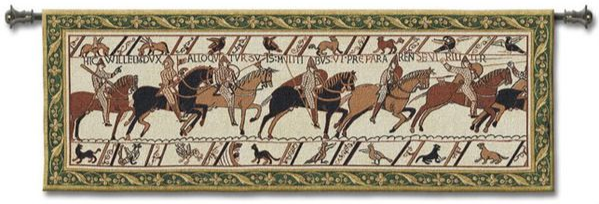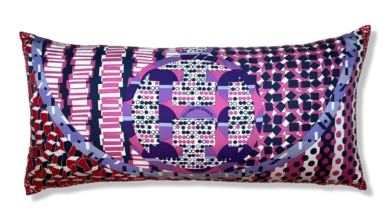What Is the Difference Between a Medieval and Renaissance Tapestry?


When one thinks of a medieval tapestry, visions of regal halls, elaborate coats of arms, and scenes of knights and legends often come to mind. These historical textiles were more than decorative—they were powerful status symbols and storytelling tools. However, by the time the Renaissance emerged, tapestries had evolved in style, technique, and thematic focus. Understanding the differences between medieval and Renaissance tapestries reveals the rich artistic evolution that occurred across centuries in Europe.
Origins and Purpose
Tapestries in both periods served practical and aesthetic purposes. During the Middle Ages, they were used to insulate cold stone walls, provide privacy, and display wealth and prestige. A medieval tapestry was typically handwoven from wool, often combined with silk, and sometimes interlaced with gold or silver thread for added opulence. They were mobile, which made them ideal for nobles who moved between estates or military campaigns.
In contrast, Renaissance tapestries continued these functions but with a growing emphasis on artistry and humanism. With the Renaissance came a shift toward more realistic perspectives, refined colour palettes, and classical themes influenced by Greco-Roman heritage.
Artistic Style and Technique
Medieval Tapestries: Symbolism and Stylisation
Medieval tapestries were rooted in religious, allegorical, and feudal imagery. The figures were often stylised, lacking realistic proportions or depth, but rich in symbolism. This was the age of storytelling through art—tales of saints, biblical events, and courtly love were intricately woven into large-scale works.
One popular example is the series known as medieval tapestries from the “Lady and the Unicorn” collection. These works blend mystical creatures with detailed floral backdrops, offering both spiritual and sensual interpretations. In such pieces, natural elements like trees and animals held symbolic meanings more than a realistic depiction.
Renaissance Tapestries: Realism and Perspective
By the 15th and 16th centuries, the Renaissance ushered in a wave of innovation across the arts. Tapestry artists began incorporating mathematical perspective, naturalistic anatomy, and classical architecture into their works. The subjects expanded beyond Christian themes to include mythology, history, and scenes of court life.
Renaissance tapestries were often designed by master painters such as Raphael or Rubens, and then woven by professional ateliers. The introduction of cartoons (full-scale designs) allowed for greater accuracy and detail in reproduction. This artistic leap forward was one of the key distinctions from medieval tapestries in design and execution.
Materials and Production Techniques
While both periods relied on wool as a base material, Renaissance weavers had access to improved dyeing techniques and finer threads. The introduction of silk and metal threads became more common, adding richness and dimension.
Moreover, the weaving centres shifted geographically. Medieval production was dominated by workshops in France and Flanders. During the Renaissance, however, cities like Brussels and later Florence and Rome became major hubs for tapestry making, benefiting from court patronage and increased trade.
Themes and Iconography
Tree of Life Tapestry and Other Symbols
Among the most enduring motifs in both periods is the Tree of Life tapestry. In medieval works, this design often symbolised spiritual growth, eternal life, or a connection between heaven and earth. Rendered in stylised patterns with birds, flowers, and fruit, it was often surrounded by layers of symbolic meaning.
In Renaissance examples, this motif might still appear, but with more botanical accuracy and classical references. The transition in how artists portrayed such themes reflects the broader intellectual and cultural changes of the time.
Cultural and Social Significance
Tapestries in the medieval era were largely commissioned by the church or aristocracy, and they reflected hierarchical and religious values. Their iconography was meant to educate and inspire devotion. In contrast, Renaissance patrons were often wealthy merchants, city leaders, or members of the increasingly secular court. The art they commissioned was more personal, humanistic, and expressive of individual power and taste.
The Renaissance also saw a greater focus on personal identity and portraiture within tapestries, something rare in earlier medieval works. This shift highlights the cultural move from collective religious narratives to more individualised and worldly expressions of life.
Conclusion
The difference between a medieval tapestry and a Renaissance tapestry lies in more than just the time period—it reflects a fundamental transformation in European society, values, and art. While medieval tapestries focused on symbolic storytelling and stylised forms, Renaissance works embraced realism, classical themes, and artistic innovation. Whether admiring a mythological scene or a Tree of Life tapestry, one can appreciate the distinct yet interconnected beauty of both eras. Ultimately, medieval or Renaissance stand as woven chronicles of cultural evolution, offering insight into the worldviews and aspirations of their time.




